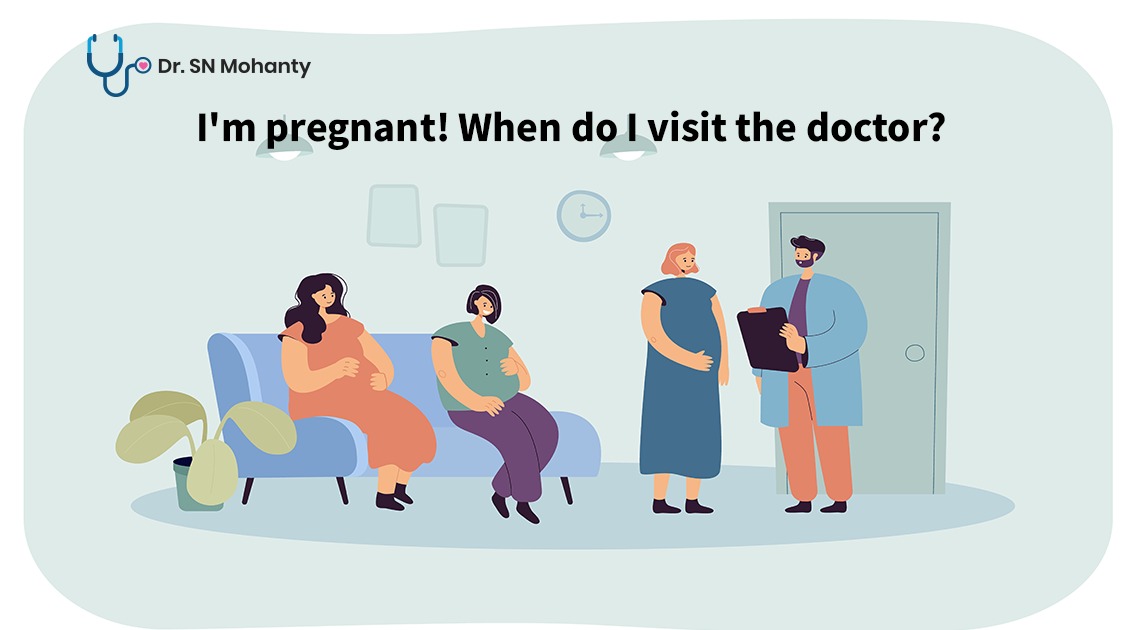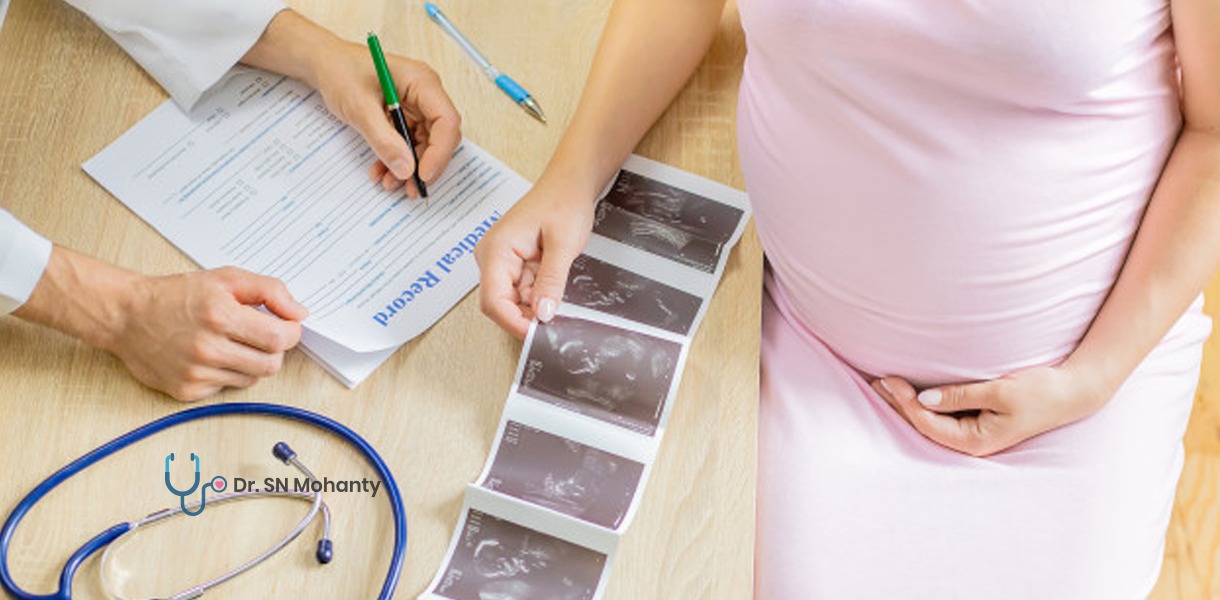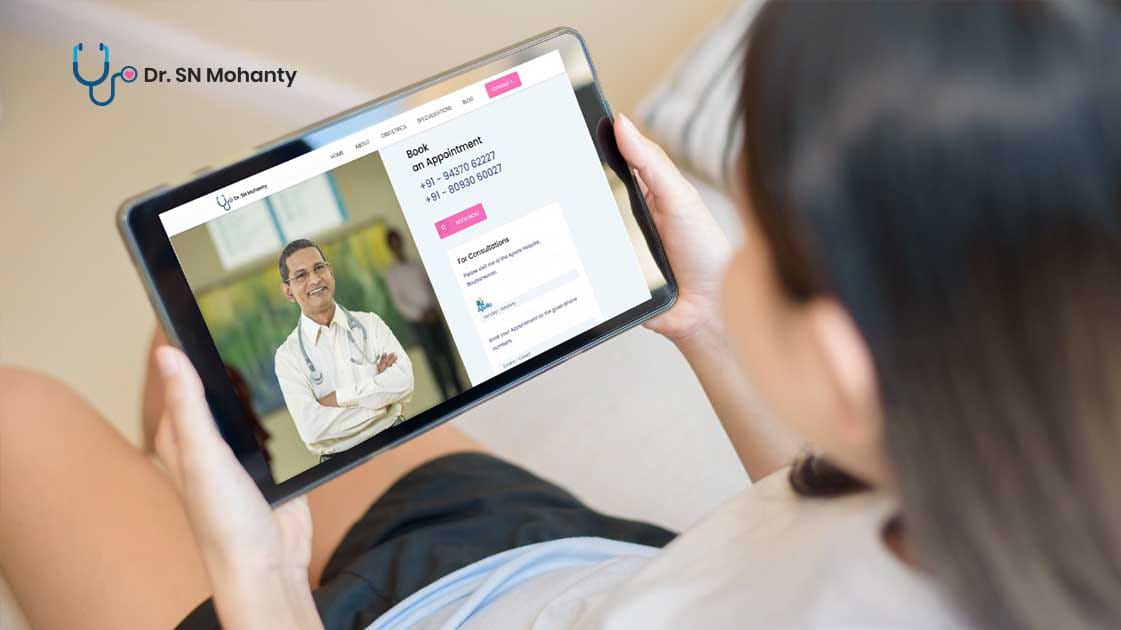
Fibroids are tumors made of smooth muscle cells and stringy connective tissue. They create in the uterus. The most significant characteristic of fibroids is that they're noncancerous. Studies show that fibroids develop at various rates, and even a woman can have more than one. They can run from the size of a bean to the size of a melon. Uterine fibroids are much of the time discovered unexpectedly during a routine pelvic test. Your doctor may feel irregularities in the shape of your uterus, proposing the presence of fibroids.
On the off chance that you have indications/symptoms of uterine fibroids, your gynecologist may ask to conduct the following tests to confirm the presence of fibroids:
Ultrasound: Ultrasound utilizes sound waves to get an image of your uterus to affirm the analysis and to map and measure fibroids. The gynecologist uses the ultrasound device over your abdomen or places it inside your vagina to get pictures of your uterus.
Lab tests: If you have irregular menstrual cycles, the gynecologist may arrange different tests to explore expected causes. These might incorporate a complete blood count (CBC) to decide whether you have anemia as a result of ongoing blood loss and other blood tests to preclude blood loss or thyroid issues.
On the off chance that the ultrasound doesn't give enough and clear information, the doctor may arrange the following tests:
- MRI: This imaging test can show in more detail the size and area of fibroids, distinguish various kinds of tumors and help to decide among the various treatment choices.
- Hysterosonography: Hysterosonography additionally called a saline infusion sonogram, utilizes clean saline to expand the uterine cavity, making it simpler to get pictures of submucosal fibroids and the lining of the uterus in women willing to get pregnant or who have menstrual flow.
- Hysterosalpingography: Hysterosalpingography utilizes a dye to feature/highlight the uterine cavity and fallopian tubes on X-ray pictures. Your doctor may suggest it if infertility worries you. This test can enable your doctor to check whether your fallopian tubes are open or are obstructed and can check the presence of submucosal fibroids.
- Hysteroscopy: For this, your PCP embeds a little, lighted telescope called a hysteroscope through your cervix into your uterus. At that point, the doctor infuses saline into your uterus, expanding the uterine cavity, enabling the doctor to look at the walls of your uterus and the openings of your fallopian tubes.
- Hysteroscopy: For this, your PCP embeds a little, lit telescope called a hysteroscope through your cervix into your uterus. Your PCP at that point infuses saline into your uterus, extending the uterine cavity and permitting your primary care physician to look at the dividers of your uterus and the openings of your fallopian tubes.
Treatments of Fibroids
There's no single best way to deal with uterine fibroid treatment — numerous treatment alternatives exist. If you have symptoms, talk with your doctor about choices for indication alleviation.
Watchful waiting
Numerous ladies with uterine fibroids experience no signs or side effects, or just somewhat irritating signs and indications that they can live with. On the off chance that is the situation for you, watchful waiting up could be the most ideal choice.
Fibroids aren't cancerous. They rarely interfere with pregnancy. They typically develop gradually — or not in any manner — and will tend to shrink after menopause, when levels of conceptive hormones drop.
Medications
Medications for uterine fibroids target hormones that manage your menstrual cycle, treating symptoms, for example, heavy menstrual flow and pelvic pressure. They don't dispense with fibroids, however, it may shrink
Certain methods can remove uterine fibroids without really eliminating them through a medical procedure. These procedures are known as minimally invasive procedures. Some of them are described below:
Uterine artery embolization
Little particles (embolic agents) are infused into the arteries providing the uterus, cutting off the bloodstream to fibroids, making them shrink & die. This method can be powerful in shrinking fibroids and reducing the side effects they cause. Difficulties may happen if the blood supply to your ovaries or different organs is undermined.
Radiofrequency Ablation
In this methodology, radiofrequency energy is used to destroy uterine fibroids and it shrinks the veins that feed them. This is done with the help of a laparoscopic or transcervical procedure.
With laparoscopic radiofrequency removal, the gynecologist makes two little entry points in the abdomen to insert a thin review instrument (laparoscope) with a camera at the tip. Utilizing the laparoscopic camera and a laparoscopic ultrasound device, the gynecologists find fibroids to be dealt with.
After finding a fibroid, the doctor utilizes a specific gadget to convey a few little needles into the fibroid. The needles heat the fibroid tissue & destroy it. The destroyed fibroid quickly changes consistency, for example from being hard similar to a golf ball to be delicate like a marshmallow. During the following three to twelve months, the fibroid keeps on contracting, improving indications.
This procedure is a minimally invasive procedure and an alternative to hysterectomy and myomectomy. Most ladies who have the method return to their normal routine following 5 to 7 days of recovery
The transcervical or through the cervix way to deal with radiofrequency removal likewise utilizes ultrasound direction to find fibroids.
Laparoscopic or Robotic Myomectomy
In a myomectomy, the gynecologists remove the fibroids, leaving the uterus at the place.
If the fibroids are very few, you and your gynecologist may settle on a laparoscopic or robotic myomectomy, which utilizes slim instruments, embedded through little entry points in your abdomen to eliminate the fibroids from your uterus.
Your gynecologists can view your abdominal area on a screen utilizing a little camera connected to one of the instruments. Robotic myomectomy gives the gynecologist an amplified/magnified, 3D perspective on your uterus, offering better precision, adaptability, and proficiency than any other surgical procedure.
Hysteroscopic Myomectomy
This method might be an alternative if the fibroids are contained inside the uterus (submucosal). The gynecologists reach and eliminate fibroids utilizing instruments embedded through your vagina and cervix into your uterus.
There are traditional surgical procedures to remove fibroids. They are:
Abdominal myomectomy
If you have numerous fibroids, enormous fibroids, or deep fibroids, the gynecologist may opt for open abdominal surgery to eliminate the fibroids.
Many women who are informed that hysterectomy is their only option, can have an abdominal myomectomy. Scarring after the medical procedure can influence future fertility.
Hysterectomy
This medical procedure is the removal of the uterus remains the only proven solution for uterine fibroids. Hysterectomy is a significant medical procedure.
Hysterectomy losses your ability to conceive. On the off chance that you likewise choose to have your ovaries eliminated, the medical procedure brings on menopause. Most women with uterine fibroids might have the option to decide to keep their ovaries.
Consult with the best gynecologist, understand your current situation, and don’t hesitate to ask any questions regarding your current reproductive health. Discuss with your doctor and come to a decision that wouldn’t harm you or cause any serious threat to your health.










